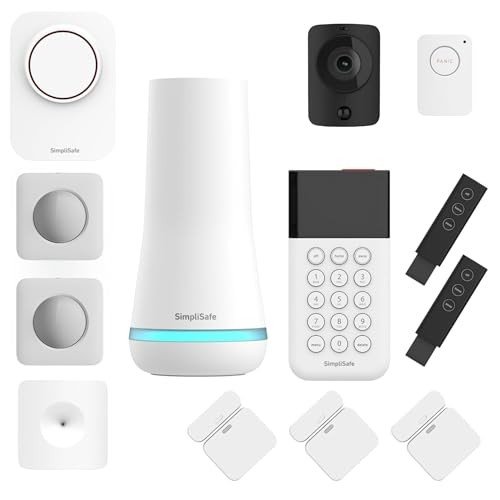A Comprehensive Guide to Buying Kitchen Lighting in the UK
When it pertains to kitchen design, lighting plays an important role in functionality, visual appeals, and total atmosphere. Picking the right kitchen lighting can substantially boost how you use space, impacting whatever from meal preparation to entertaining visitors. With the huge range of options readily available in the UK, it can be intimidating to select the ideal kitchen lighting. This guide intends to streamline the procedure and supply valuable insights into the different types of kitchen lighting, factors to consider, and ideas on making notified choices.
Types of Kitchen Lighting
Understanding the various types of kitchen lighting is important for attaining a well-lit space. Each category serves a distinct purpose and can be utilized to create a layered lighting impact.
| Type of Lighting | Description |
|---|---|
| Job Lighting | Offers focused illumination for particular tasks, such as cooking, reading recipes, or washing dishes. |
| Ambient Lighting | Offers overall lighting for the whole kitchen, normally through overhead fixtures or ceiling lights. |
| Accent Lighting | Emphasizes particular functions or decorative aspects, such as art work, backsplashes, or architectural details. |
| Decorative Lighting | Adds a stylistic or visual touch, such as pendant lights and chandeliers that work as centerpieces. |
Job Lighting
Job lighting is vital for guaranteeing security and effectiveness while preparing meals. Under-cabinet lights, for example, are a popular choice as they brighten the counter top without adding shadows, making tasks easier.
Ambient Lighting
Ambient lighting offers a warm, welcoming glow to the kitchen. This can be achieved through ceiling-mounted fixtures, recessed lighting, or chandeliers. The key is to make sure consistent light circulation throughout the area.
Accent Lighting
Accent lighting, using fixtures like wall sconces or LED strip lights, directs attention to specific areas or features within the kitchen. This kind of lighting can be especially efficient in showcasing lovely backsplashes, cabinet designs, or decorative items.
Decorative Lighting
Decorative lighting includes character and style to a kitchen. Pendant lights above an island or a trendy chandelier can become statement pieces, enhancing the kitchen's general style.
Elements to Consider When Buying Kitchen Lighting
Selecting the suitable kitchen lighting involves evaluating several vital elements to ensure you make the finest decisions for your space.
Design and Size of the Kitchen
- Comprehend the measurements of your kitchen and recognize key workspace. The layout will figure out how you distribute lighting fixtures.
Functionality
- Think about how you utilize the kitchen. If you often cook or host, select job lighting. If your kitchen functions as a dining location, ambient lighting will likewise be crucial.
Style and Aesthetics
- Guarantee lighting fixtures match the kitchen's design. Whether modern, traditional, or diverse, the style needs to balance with other elements.
Color Temperature
- Light color considerably affects the atmosphere. Warmer tones (2700K-3000K) develop welcoming environments, while cooler tones (4000K-5000K) are much better suited for task-oriented areas.
Energy Efficiency
- Consider LED options, as they consume less energy and have a longer life-span compared to incandescent or halogen bulbs.
Dimming Capability
- Incorporating dimmer switches enables flexibility in adjusting light intensity for different activities.
Tips for Buying Kitchen Lighting
When shopping for kitchen lighting, keep the following ideas in mind:
- Measure First: Measure the areas where you plan to set up fixtures to ensure they fit well.
- Mix Fixtures: Combine different kinds of lighting for a well balanced approach, blending job, ambient, and decorative choices.
- Think about Placement: Pay attention to the height at which you install fixtures. For islands, pendants ought to hang 30-36 inches above the surface.
- Evaluate Brightness: Look at lumens instead of watts; brighter doesn't always suggest better in terms of performance.
- Choose Quality: Investing in quality fixtures will conserve you cash in the long run due to resilience and reduced maintenance requirements.
Regularly Asked Questions (FAQs)
1. What is the best kind of lighting for kitchen jobs?
Task lighting, such as under-cabinet lights or pendant lights over work surfaces, is perfect for kitchen jobs as it offers focused illumination.
2. How do I pick the best size of pendant lights?
A basic guideline of thumb is that the diameter of the pendant must be around one-third the width of the island. If your island is 4 feet large, look for pendants that are around 12 inches in diameter.
3. Can I use a dimmer switch for all types of kitchen lights?
Not all lights are dimmable. Inspect the item requirements before setup. LED lights and some fluorescent lights are most likely to require compatible dimmer switches.
4. How can I improve my kitchen lighting without major restorations?
Consider incorporating plug-in under-cabinet lighting, stylish floor lamps, or battery-operated LED lights to enhance illumination without comprehensive modifications.
5. Is it needed to hire an expert to set up kitchen lighting?
While easy installations can be done independently, it's a good idea to work with a certified electrical contractor for complex setups to guarantee security and functionality.
Choosing the right kitchen lighting in the UK involves comprehending numerous lighting types, assessing essential aspects, and executing tactical suggestions. By concentrating on the kitchen's design, performance, and design, property owners can create a well-lit, welcoming space that improves daily activities and celebrations. Whether embarking on Table Lamps UK or a simple lighting upgrade, the right choices will illuminate both the kitchen and the cooking experiences shared within it.

